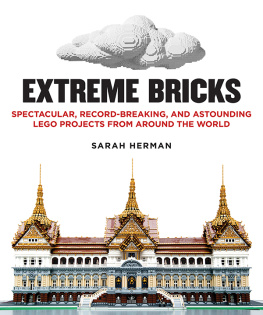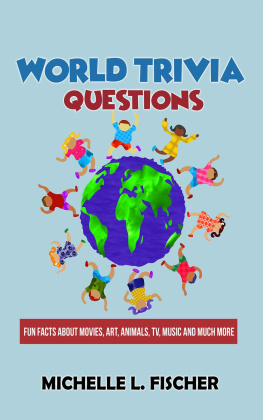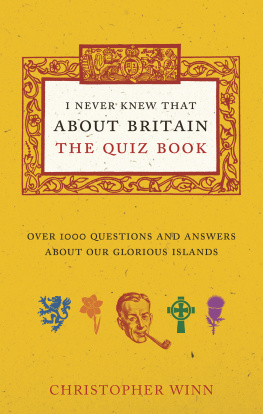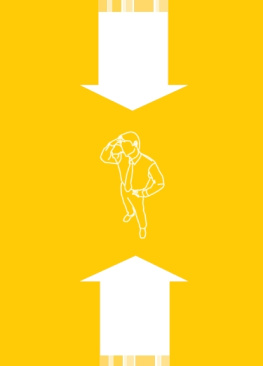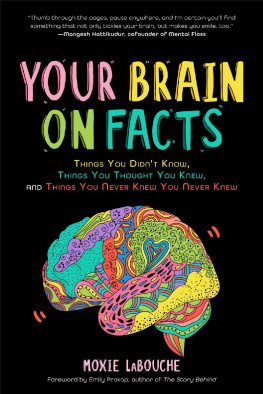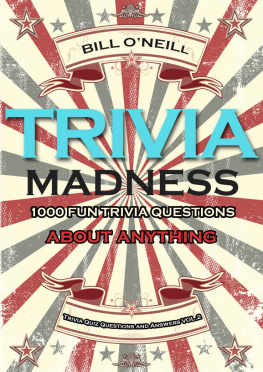| Portable Press
An imprint of Printers Row Publishing Group
10350 Barnes Canyon Road, Suite 100, San Diego, CA 92121
www. portablepress.com |
Copyright 2017 Quid Publishing
All rights reserved. No part of this publication may be reproduced, distributed, or transmitted in any form or by any means, including photocopying, recording, or other electronic or mechanical methods, without the prior written permission of the publisher, except in the case of brief quotations embodied in critical reviews and certain other noncommercial uses permitted by copyright law.
Printers Row Publishing Group is a division of Readerlink Distribution Services, LLC.
Portable Press is a registered trademark of Readerlink Distribution Services, LLC.
All notations of errors or omissions should be addressed to Portable Press, Editorial Department, at the above address. All other correspondence (author inquiries, permissions) concerning the content of this book should be addressed to Quid Publishing, Level 1, Ovest House, 58 West Street, Brighton, UK, BN1 2RA.
Publisher: Peter Norton
Publishing/Editorial Team: Vicki Jaeger, Tanya Fijalkowski, Lauren Taniguchi
Editorial Team: JoAnn Padgett, Melinda Allman, Dan Mansfield
Conceived and designed by Quid Publishing, part of The Quarto Group, Level 1, Ovest House, 58 West Street, Brighton, UK, BN1 2RA
Cover and interior design: Clare Barber
Text: Sarah Herman
eISBN: 978-1-68412-043-7
eBook Edition: August 2017
For Ian, for
always keeping
me guessing!
CONTENTS
T heres nothing quite like being the biggest brainiac in the boardroom, the dinner party guest who really shows their knowledge, the office buddy who chimes in to settle an argument, or the parent who passes wisdom on to their subjects (sorry, children).
Having the facts at your fingertips is one thing, but being able to explain who, what, where, and why puts you a step above those quick-fire quizmasters. This book is all about expanding your mind and fueling you with the answers to curious questions, many of which you might never have thought to ask. And all of which will leave you exclaiming, Who knew?
Over the following chapters youll get to grips with wild weather, bodily functions, outstanding artworks, and mind-boggling botanicals. Youll travel back in time to the lands of the ancients, read up on the lives of authors, and don your protective goggles for some good old-fashioned science. And if all thats not enough, take a trip around the world, get clued up on the origins of sports (whiff-whaff, anyone?) , and arrive at the outer reaches of the galaxy.
From the silly (Is it safe to eat watermelon snow?) and the scientific (Is the periodic table complete?) to the unusual (What happened to the Soviet space dogs?) and the unexpected (What did Vladimir Nabokov keep in his cabinet?) , youll soon be an expert on the brilliant and bizarre spectrum that Who Knew? covers. Youll be the one exhibiting your latest learnings by the watercooler and wowing your loved ones with tidbits of tantalizing trivia.
Of course, all this reading is no good without retention. Thats why, at the end of each section, theres a quick quiz to keep you on your toes. Test yourself and your friends with these pithy pickings from each chapter to make sure you know more than they do. Youll soon realize that while money and accolades are nice, knowledge (and being a smug smarty-pants) really is its own reward.
So get ready to galvanize your gray matter and sharpen your savoir faire as you step into the wondrous world of knowing it allor, at the very least, knowing a lot more than you did before.
| Whats the difference
between fog and mist? |
F og and mist are pretty much the same thinga type of dense, low-lying stratus cloud, made up of droplets of water. The extent to which they obscure visibility is what determines which word is appropriate.
How Far Can You See?
The term fog is used when visibility to the naked eye is less than 600 feet. However, in the context of shipping and aviation, 3,250 feet is the internationally recognized distance, so anything where visibility is greater than this is considered mist.
Havent the Foggiest
While fog and mist can be beautiful and enchanting, adding a sense of mystery to landscapes and mountaintops, these tricky weather types have caused a few problems in their time. In 1815, panic swept Great Britain after a message announcing Wellingtons victory at Waterloo, relayed by semaphore line from the English coast to London, was obscured by heavy fog. Instead of communicating Wellington defeated Napoleon at Waterloo, the message read Wellington defeated.
HISTORYS
DEADLIEST FOG
Until the Clean Air Acts of 1956 and 1968, London was well known for its heavy smog, created from pollutant chimney smoke mixing with the citys damp air. Known as pea-soupers because of their thick nature and sulfurous fumes, these smogs were reported as reducing visibility to just 2 feet. In December 1952, an unlucky combination of weather conditions and factory fumes created the Great Smog, which lasted nearly five days, killing around 4,000 and causing health problems for many more.
| Can lightning
strike twice? |
L ightning can travel at a speed of 14,000 miles per hour and a distance of 60 miles. While your chances of being struck are about one in three million, that doesnt mean that lightning hasnt struck the same person or location twice.
Unwanted Records
Park ranger Roy Cleveland Sullivan from Virginia was struck by lightning seven times between 1942 and 1977, making him the Guinness World Record holder for surviving the most lightning strikes. And the Empire State Building was once hit 15 times in one 15-minute storm.
HOTTER THAN
THE SUN
When lightning strikes the ground, the energy heats the surrounding air to anywhere from 18,000 to 60,000Fpotentially six times hotter than the 10,000F surface of the sun. Injuries sustained by people unlucky enough to be struck include temporary deafness, third-degree burns, and even cardiac arrestbut theres only a 10% chance of being killed.
The Lightning Chaser
American Founding Father and inventor Benjamin Franklin was among the first to hypothesize that metal conducts lightning. In 1752 he set out to prove the theory that lightning is a form of electricity. Although there is some scientific debate about how or even if the experiment was performed, its thought that he tied a metal key to a kite with an insulating silk ribbon. When he flew the kite in a storm, the key was struck by lightning and the electric charge was captured in an early type of capacitor, called a Leyden jar, proving the theory. Fortunately, Franklin survived to tell the tale.
| How fast can a
sand dune move? |
F rom Marco Polo and Alexander the Great to Genghis Khan, some of the worlds most famous adventurers, conquerors, and explorers have traveled across deserts to change the course of history. But you might not know that the sand dunes are traveling, too, at the mercy of the winds.
Carried Away
Sand dunes are formed when theres an abundance of sand with little vegetation to anchor it, a strong wind, and shrubs or rocks that obstruct the sand so it piles up. There are three ways that sand moves: suspension, creeping, and saltation. Suspensionwhen a sand grain is blown high into the air by a very strong windonly accounts for about 1% of sand dunes movement. And creepingwhen a grain bumps into another grain, causing them to jump or roll alongaccounts for about 4%.


